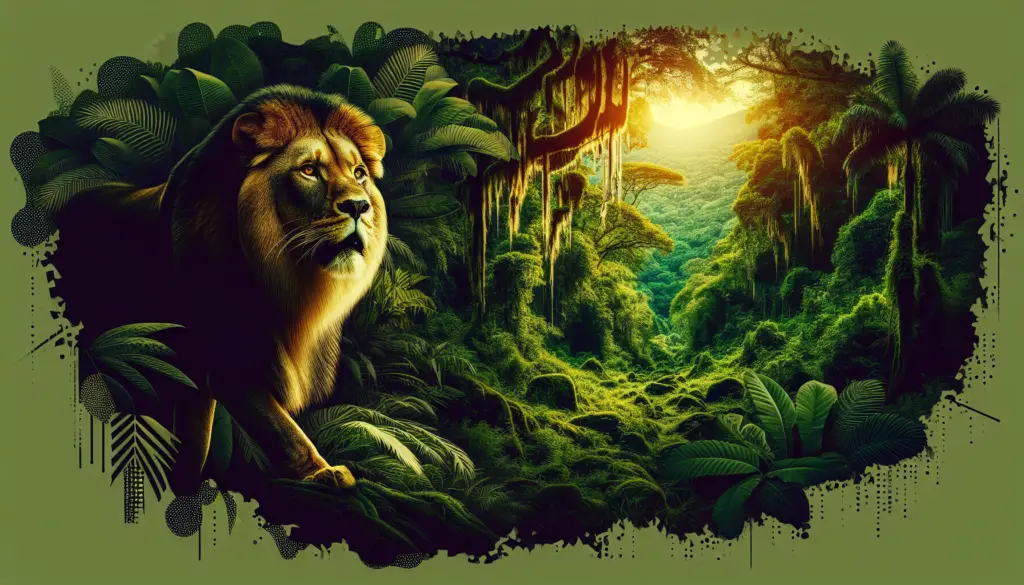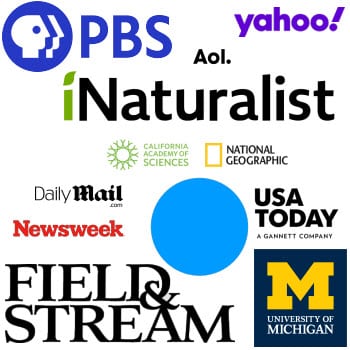Discovering the Congo Lion: An Elusive Subspecies
Alright, folks, let’s talk about a lion you probably haven’t heard much about—the Congo Lion! This isn’t your run-of-the-mill king-of-the-Savannah lion. Oh no, these majestic cats are jungle royalty, quietly ruling the lush forests of Central Africa. Known scientifically as Panthera leo azandica, this rare subspecies has some pretty wild (pun totally intended) adaptations that make them stand out. Let’s take a walk on the wild side and uncover what makes these jungle prowlers so extraordinary!
Appearance and Physical Characteristics
If you’re picturing the giant, golden-maned lions of the Serengeti, think again. Congo Lions are the jungle’s stealth ninjas—compact, with a low-profile mane that won’t tangle in thick foliage. Male Congo Lions weigh in at a solid 330 to 440 pounds, while females range from 260 to 350 pounds. Their coats are darker and dense, an ideal camouflage to help them melt into the shadows of their rainforest home. So, basically, they’ve got the jungle survival look completely nailed.
Habitat: Living in the Heart of Africa
These lions call the dense, humid jungles of the northeastern Democratic Republic of Congo their stomping grounds. No sunny savannahs here—it’s all about thick underbrush, swampy terrain, and towering trees. Living in the Congo Basin is a unique challenge, but this lion has made itself right at home, blending into the impossible green tangle like a furry ghost of the forest.
Diet: What Do Congo Lions Eat?
Jungle dining is no walk in the park (err, forest?), but the Congo Lion has it figured out. Their menu of choice? Anything they can catch! These opportunistic hunters primarily go after forest antelopes, wild pigs, and the occasional off-guard monkey. When life gives you smaller prey, you hunt smarter, and the Congo Lions excel at making the best of their surroundings. It’s all about adaptability, people.
Behavior: Adapting to the Jungle Life
Forget the massive lion prides you’ve seen in documentaries—Congo Lions run a much more intimate operation. Their prides are smaller, often just a few family members, which is better suited for sneaky jungle ambushes. They’re also a bit more introverted, preferring to avoid humans (a solid life choice). Oh, and they’re night owls, hunting and prowling the jungle in the twilight or nighttime when things are cooler and quieter. Smart cats, huh?
Reproduction and Lifespan
Life begins for the Congo Lion with a litter of two to four cubs, born after about 110 days of gestation. The little ones stick around their mom for up to two years to learn the ways of jungle survival. In the wild, these lions have a lifespan of about 12 to 16 years, which is impressive considering the harsh environment they navigate daily. Congo Lion moms truly deserve a jungle crown for raising these resilient cubs!
Threats: Facing Extinction Risks
I hate to be the bearer of bad news, but these lions are in some serious trouble. Habitat loss due to deforestation is wreaking havoc on their rainforest home. Add poaching and increased conflicts with humans to the mix, and you’ve got a recipe for a vanishing subspecies. Their numbers are dwindling, folks, and it’s up to us to step in and help before it’s too late.
Conservation Efforts and How You Can Help
Thankfully, there’s hope! Conservation groups are stepping up, implementing anti-poaching patrols and working closely with local communities to raise awareness. The best part? You can help. Support sustainable practices, donate to organizations focused on wildlife conservation, or even spread the word about the plight of the Congo Lion. Every small action adds up in this epic battle to protect our wildlife heroes.
Comparing the Congo Lion to Other Subspecies
Congo Lions are like the cool, slightly mysterious cousins of your traditional Savannah lion. For one, they’re smaller and less showy (no big, flashy manes here). They also prefer keeping things low-key, hanging out in small groups rather than sprawling prides. The jungle environment has bred a totally unique type of lion, and appreciating these differences reminds us just how amazing nature’s diversity truly is.
Interesting Facts About the Congo Lion
If you thought they couldn’t get cooler, here are a few fun nuggets about the Congo Lion:
- Their roars can travel an incredible five miles—talk about jungle surround sound!
- These lions are excellent climbers and will actually nap in tree branches like overgrown housecats.
- Thanks to insanely good night vision, they have no problem navigating and hunting under the cover of darkness.
The Importance of Biodiversity in the Congo Basin
Make no mistake—the Congo Basin isn’t just home to these lions. It’s one of the richest ecosystems on the planet, housing countless species that all depend on one another. Protecting the Congo Lion means protecting the entire system, from rare birds to jungle frogs to ancient trees. This biodiversity keeps the entire forest (and the planet!) thriving. It’s all connected, folks.
Connecting with Other Wildlife
The Congo Lion doesn’t hog the spotlight in the jungle (well, maybe a little). They share their habitat with incredible animals like the elusive Bongo—a strikingly marked forest antelope you’ll probably fall in love with. These interconnected ecosystems show us just how much every living thing matters. If this kind of nature nerdiness excites you, check out more about different species like unique deer in various habitats.
Conclusion: The Future of the Congo Lion
Here’s the bottom line: the Congo Lion’s fate is in our hands. By supporting conservation efforts and spreading the word, we’re giving these lions (and their jungle neighbors) a fighting chance. They’ve survived in one of the toughest environments on the planet—now it’s time we chip in and help. Together, we’ve got what it takes to ensure this amazing big cat prowls the Congo Basin for generations to come. Let’s roar louder for conservation!
Cultural Significance and Mythology Surrounding the Congo Lion
The Congo Lion isn’t just your regular big cat; it’s a creature steeped in lore and legend! Think of it as the storyteller of the jungle, its tales passed down through generations. Here in Central Africa, these lions command awe and respect, often wrapped in a mystique that goes beyond their physical power.
Local tribes attribute near-magical qualities to these furry phantoms of the brush. Some recount tales of lions as guardian spirits, leading wayward travelers out of the dense jungle maze and back to safety. Imagine having a lion as your personal GPS—pretty cool, right?
These myths and stories do more than entertain; they cement the lion’s status not only in the wild but also in the hearts and traditions of the people. Understanding this cultural bond helps us see why preserving the Congo Lion is about more than biodiversity—it’s about honoring the human history intertwined with these majestic beasts.
Protecting the lion means safeguarding both their roaring legacy in the ecological kingdom and their silent roar in the annals of cultural heritage. Because let’s face it—what’s a jungle without its king (or queen)?
The Role of the Congo Lion in the Ecosystem
Alright, let’s talk jungle dynamics. The Congo Lion isn’t just a top-tier predator—it’s like the jungle’s bouncer, keeping everyone in check and maintaining order. Antelopes, wild pigs, and other herbivores might throw a rave, munching away at vegetation, if lions weren’t around.
Without lions to regulate prey populations, you’d see plant life vanish faster than snacks at a party, and that could send the entire food web into chaos! Even their leftovers play a role. Yep, leftover lion meals feed scavengers and even some opportunistic birds and insects. Waste not, want not, right?
The health of the lion population is like the jungle’s wellness check. If the lions are thriving, chances are the ecosystem is doing alright. So, protecting these pawsome predators ensures life in the Congo Basin stays vibrant for everything from the tiniest insects to the mightiest of giants.
Challenges in Studying the Congo Lion
Studying the Congo Lion is no walk in the park—it’s more like trekking through dense, unforgiving jungle terrain with a full-body workout to boot. These lions are shy and elusive, which adds to their mystique but makes tracking them a conservationist’s nightmare.
Modern tech like GPS collars and camera traps has come to the rescue, but even they aren’t foolproof. Ever tried keeping gear functioning in a jungle sauna? Yeah, the constant humidity and rain make gadgets as unreliable as a flat tire during a road trip.
And let’s not overlook the logistical headaches—funding issues and political instability. Research can literally grind to a halt because someone somewhere misplaced a form. Yet, even amidst these trials, collaboration with local communities has proven to be the magic ingredient for gathering vital information while supporting jobs. It’s teamwork, jungle-style!
Human-Wildlife Conflict: Navigating a Delicate Balance
As people expand their footprint (and fences) into jungle regions, the chances of running into a lion increase. Now, while a lion might see livestock as a buffet, for farmers, losing livestock can be an economic disaster.
Unfortunately, such encounters often end with lions paying the price. But there’s hope! Simple solutions like secure enclosures, noise deterrents, and even motion-triggered lights can keep lions at bay. Plus, workshops educating folks on lion behavior can help reduce fear—and who knows, create a few lion fans in the process!
By focusing on peaceful coexistence, communities can protect their livelihoods while ensuring lions stay on the prowl in their natural habitats, not human backyards. Win-win, right?
Conservation Success Stories: A Glimmer of Hope
Here’s some good news to brighten your day: Conservation efforts for the Congo Lion aren’t all doom and gloom. There are inspiring stories of victories that shine like sunbeams through jungle canopies.
Community-led patrols in some areas have dramatically reduced poaching. Meanwhile, local educational programs are creating a ripple effect of awareness. And the cherry on top? Sustainable tourism. It’s like putting the safari in humanitarian aid—tourists support local economies while learning to appreciate these majestic predators.
These success stories show that with a bit of perseverance and a lot of teamwork, progress can be made. They remind us that every effort counts, and when people care, amazing things can happen.
How Technology is Aiding Conservation Efforts
Let’s take a moment to appreciate how tech has become a game-changer in the race to save the Congo Lion. Enter drones—flying eyes in the sky that make tracking these big cats easier and safer (because nobody wants to get stuck in a jungle thicket).
Then there are mobile apps that empower locals to report lion sightings in real time, creating a living data map of lion activity in the region. Pretty savvy, right? These tools not only help scientists figure out where lions are chilling but also predict areas of potential conflict.
The result? Smarter decisions and higher chances of keeping the ecosystem balanced and everyone—human and lion alike—out of harm’s way. Thank you, technology!
The Congo Lion and Climate Change
Let’s talk about the not-so-cool effects of climate change on our jungle royalty. With rainfall patterns doing a cha-cha and water sources drying up faster than you can say “global warming,” lions are forced to adapt quickly.
This often means fearing fewer prey options and, worst of all, getting dangerously close to human settlements—making an already delicate relationship even trickier. Addressing climate change isn’t just about keeping the planet chill; it directly impacts the survival of species like the Congo Lion.
The takeaway? Reduce that carbon footprint, champion eco-friendly initiatives, and remember: Every small step helps preserve the roar of the jungle.
Collaborations with International Organizations
Saving the Congo Lion isn’t just a local affair—it’s a global mission. Big-league partnerships with organizations like the WWF bring in resources, money, and fresh ideas to tackle the challenges head-on.
From anti-poaching patrols to community engagement programs, these collaborations amplify efforts on the ground. Plus, they show how the international community can rally together for a common cause. When brains and budgets unite, the impact can be extraordinary!
Educational Outreach: Empowering the Next Generation
Knowledge is power, and when it comes to conservation, education might just be a lion’s best friend. By teaching communities—and especially kids—about the Congo Lion, we can shift attitudes and nurture a culture of respect for nature.
Think hands-on workshops, fun school programs, and interactive games showing just how important these big cats are for the ecosystem. After all, today’s curious kid could turn into tomorrow’s conservation champion. And honestly, who doesn’t love a win for both education and wildlife?
What Can You Do to Make a Difference?
Feeling pumped to save some lions? Here’s how you can help:
- Donate to reputable conservation organizations—they need those funds!
- Volunteer your time or skills, whether locally or abroad.
- Spread the word. Sharing is caring, and awareness works wonders.
- Support eco-friendly products to reduce impacts on natural habitats.
- Advocate for wildlife-friendly policies to protect their jungle homes.
Even small actions can add up to big results. Together, we can ensure the Congo Lion thrives for years to come.
Exploring Similar Conservation Stories
If this article has you buzzing about conservation, head on down the rabbit hole (or should we say, lion’s den?) of other fascinating wildlife tales. From understanding deer feeding habits to how baby animals adapt, every story gives us a deeper appreciation for the world around us.
Conservation isn’t just about saving individual species—it’s about protecting the amazing web of life that sustains us all.
A Call to Action for the Congo Lion
The Congo Lion’s survival depends on action—yours, mine, and everyone else’s. Whether it’s donating, spreading the word, or advocating for policies that protect these majestic creatures, every effort matters.
Let’s make a pact to keep the jungle echoing with their powerful roar. Together, we can write a future where the Congo Lion remains a proud and vital symbol of strength in the African wild.


